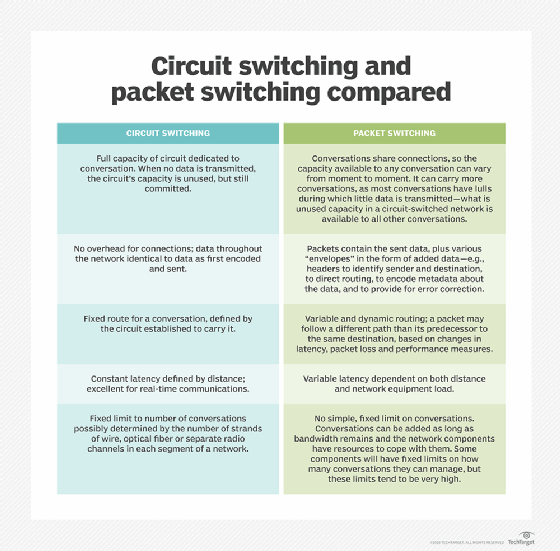line card
What is a line card?
A line card may be a modular electronic telecommunications switching component on a printed circuit board, or a printed brochure or document that contains the names, descriptions and products that are sold by a third party.
For the latter, the third party may be a distributor, a sales representative or a value-added reseller. In this context, a line card plays a key role in helping customers to see the product lines the manufacturer offers. Line cards may also make it easier to compare product specifications and costs. Sales personnel can also use line cards during sales calls.
In telecommunications settings, the line card interfaces between subscribers to the telecom network and the rest of the network.
Line card in telecommunications and electronic circuits
A line card provides both transmitting and receiving ports for a local area network (LAN) or wide area network (WAN). Its circuitry is typically built into each port of a small or medium-sized router with a fixed number of ports.
In telecom systems, a line card (also known as a digital line card) is used to interface the twisted pair cable of a Plain Old Telephone Service (POTS) local loop and the public switched telephone network (PSTN). The electronic circuits on the line card interface with the telecom lines coming from subscribers with the rest of the telecom access network. Subscribers' lines may be copper wires or optical fibers.
In a subscriber loop carrier, a line card is usually known as a subscriber line interface card. There may be multiple line cards in the same network element.
A line card used on the PSTN may have many functions, including the following:
- analog-to-digital conversions of voice transmissions;
- digital-to-analog conversions of voice transmissions; and
- off-hook receiver detection.
In some telephone exchanges, line cards also decode dual tone multi-frequency signals and/or generate ringing current.

BORSCHT functions on telecommunications line cards
A line card also offers BORSCHT (battery feed, overvoltage protection, ringing, supervision, codec, hybrid and testing) functions. These functions, which were traditionally used in POTS telephony, are now also integrated into semiconductor chips. These chips enable low-cost implementation of a standard POTS telephone interface for connecting to non-traditional telephony networks such as the following:
New capabilities of line cards
Line cards have evolved over time and now provide many more capabilities than they did previously.
One such capability is integrated line testing. In the past, line testing was performed by external test head equipment that connects to the line cards through a relay matrix to perform AC/DC voltage tests and impedance tests. Algorithms would be performed on these measurements to generate results that would determine the condition of the wire line.
Now, as line access network circuits have become more sophisticated, line cards perform the multimeter functions required to measure voltage and impedance. Today's line cards can independently measure these parameters and analyze all data in real time. This eliminates the cost of test head equipment and the need for a relay matrix.
New line cards run more efficiently than their predecessors yielding power savings due to more efficient chipsets and better design algorithms.
These devices now deliver the triple-play services of voice, video and data. In the future, they could also satisfy the demand for quadruple-play service by adding wireless or mobile phone Backhaul traffic.
Finally, unlike in previous iterations, POTS is no longer the main feature or purpose of the line card. Although new cards include this conventional feature, they also provide additional features such as voice over IP and broadband data, plus Asymmetric Digital Subscriber Line and very high-speed DSL.
Optical line cards
An optical line card is required for setting up high-speed data and network connections. Its role is to link the router to an external network through an optical fiber interface.
The optical line card may be part of a router or switch. It should be able to support the high-bandwidth demand from streaming services, cloud computing and other applications. It should also ensure that end users receive reliable network connections. For this, the line card must offer the following critical features:

- low standby power
- Power over Ethernet
- high energy efficiency
- excellent thermal management
Business line card
A business line card contains the list of product specifications, prices, distributors and other details that can be shared with potential customers. It is also known as a product line card, since it is typically entirely product-related.
Although useful, business line cards also have their limitations since they are "static," unlike website information that can be easily updated as needed to reflect changes in product lines and individual products.
See also demand for effective telecom service assurance to increase, study various network types and topologies for configuration, 7 steps of an SD-WAN implementation and how a network segmentation strategy works with SD-WAN.






